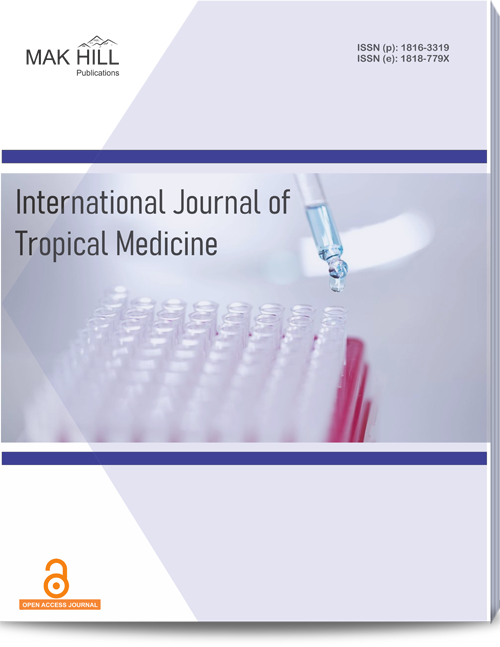
International Journal of Tropical Medicine
ISSN: Online 1818-779XISSN: Print 1816-3319
Abstract
Clinically known as pulmonary or extra pulmonary (EPTB) tuberculosis, is a chronic granulomatous illness caused by the acid‐fast bacillus Mycobacterium tuberculosis. It is a major public health concern, particularly in developing nations like India. Lymph nodes are the most often affected site in EPTBs. The objective is to compare the efficacy of Ziehl Neelsen (ZN) stain, Auramine‐O‐Rhodamine (AR) stain and cartridgebased nucleic acid amplification test (CBNAAT) for the detection of acid fast bacilli (AFB) in lymph node aspirates. Additionally, the study mainly focused on the cytomorphological features on fine needle aspiration cytology in presumed tuberculous lymphadenitis patients. A prospective study was carried out for 24 months, from 1/10/2019‐31/10/2021, in the Pathology Department of ESIC and PGIMSR, Rajajinagar, Bangalore. A total of 116 tuberculosis cases with probable cases were examined. Following FNAC, the aspirated material was placed onto three glass slides for staining with Haematoxylon and Eosin (H and E), ZN and AR. The leftover material was then transferred into a Falcon tube and diluted with 2ml of saline for CBNAAT. The majority of patients (98.25%) had cheesy aspirates, with the cervical area being the most often aspirated site (54%) and most frequently aspirated. In 88.7% of the patients, cytology revealed the presence of tuberculosis and the most common cytomorphological pattern (53.4%) seen in the cases was caseation with epithelioid cells. For ZN and AR stain, the corresponding values were 40.78%, 82.31%, 21.81%, 96.73% and 86.41%, 92.92%, 16.46% and 99.08% for sensitivity, specificity, positive predictive value and negative predictive value, respectively. The CBNAAT exhibited a 92.23% sensitivity and a 96.92% specificity. 17.38% and 99.47%, respectively, were the positive and negative predictive values. At a p value of <0.00001, it was determined that the fluorescence staining and CBNAAT methods for the detection of AFB were statistically significant. Auramine‐ O‐Rhodamine stain is proven to be more efficacious than traditional acid fast stain for fluorescent staining and CBNAAT provides fast results in just two hours while concurrently determining rifampicin resistance. As a result, we advise using CBNAAT and fluorescent staining as an addition to the standard tuberculosis diagnosis process.
How to cite this article:
Harshitha Umesh and V. Srinivasa Murthy. Clinicopathological Study of Lymph Node Aspirates in Presumptive Cases of Tuberculosis.
DOI: https://doi.org/10.36478/10.36478/makijtm.2025.1.35.43
URL: https://www.makhillpublications.co/view-article/1816-3319/10.36478/makijtm.2025.1.35.43